

Shri Vivek Bhasin, Distinguished Scientist and Director, Nuclear Fuels Group (NFG) of the Bhabha Atomic Research Centre (BARC) today took over as the 14th Director of BARC from Dr. Ajit Kumar Mohanty, Chairman, Atomic Energy Commission and Secretary to the Government of India, Department of Atomic Energy. Shri Bhasin joined in Reactor Engineering Division, in 1988 after successfully graduating from the 31st Batch of BARC Training School. He is widely recognized for his expertise in the development of nuclear fuels, nuclear reactor component designing and structural integrity assessment of power reactors.
In a career spanning more than three decades, he contributed significantly towards several programs and activities to ensure the longevity of power reactor fleet, including rehabilitation and structural integrity assessment of RAPS-1, TAPS-1&2, MAPS and TAPS-3&4 alongside reactors operating in Kaiga, Kakrapar and Narora.
Shri Bhasin played a leading role in setting up of facilities for fabrication of fuel for APSARA-U Reactor and a novel plant for production of Fission-Moly (a radioactive isotope with extensive applications in healthcare) in Trombay. He was also instrumental in improving the rate of production of Plutonium-Uranium carbide fuel for Fast Breeder Test Reactor (FBTR) in Kalpakkam.
Shri Bhasin is a recipient of several honours, including Indian Nuclear Society Medal (2002), DAE Science & Technology Award (2006), and Homi Bhabha Science and Technology Award (2014). He is a Fellow of Indian National Academy of Engineering and has more than 300 publications to his credit in the field of nuclear science and engineering.
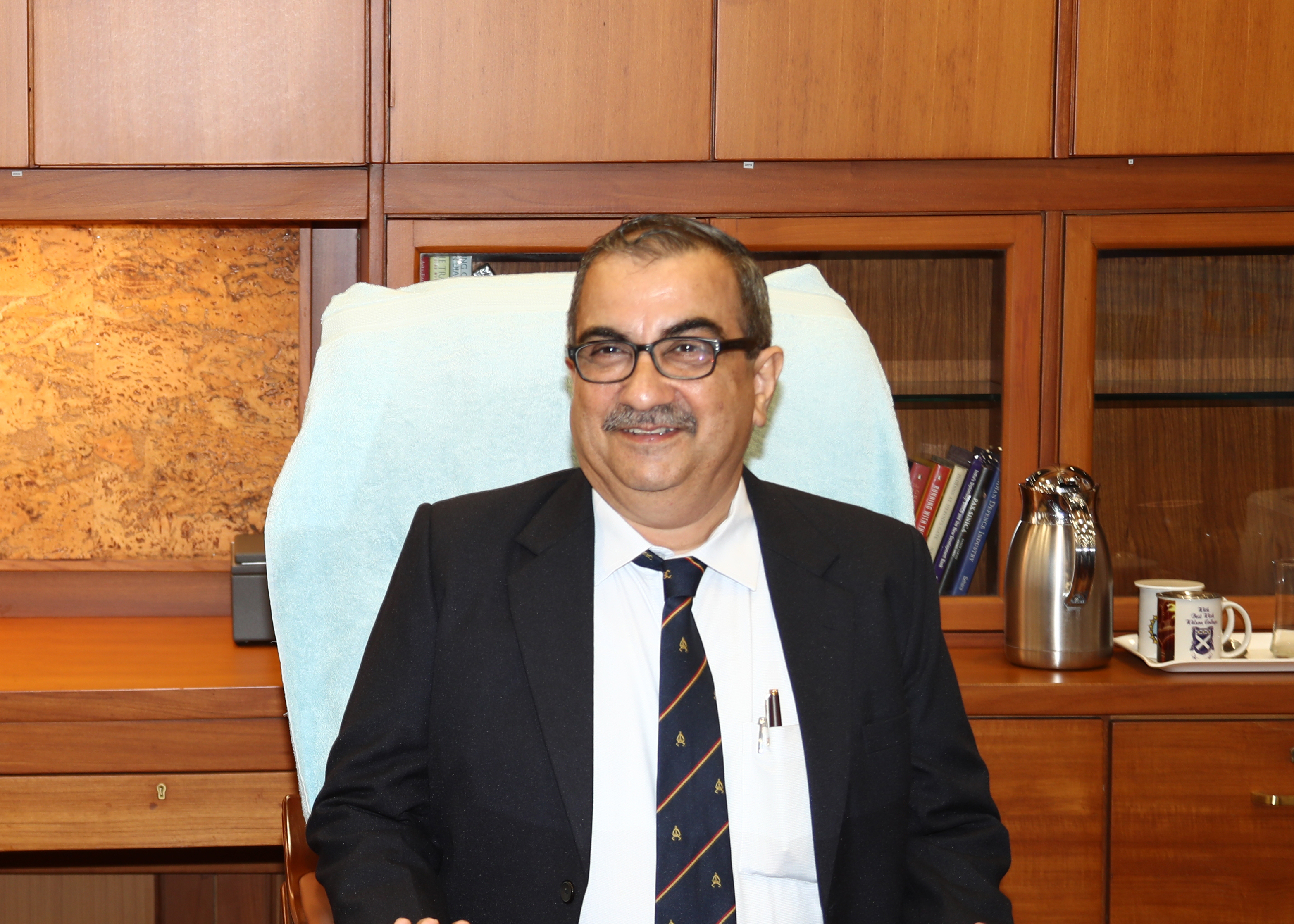
Dr. Ajit Kumar Mohanty was appointed the 13th Director of Bhabha Atomic Research Centre on March 12, 2019
Dr. Mohanty was born in Odisha in 1959. He completed his graduation in 1979 with Honours in Physics from MPC College, Baripada and his post-graduation in 1981 from Ravenshaw College, Cuttack. In 1983, he joined the Nuclear Physics Division, BARC after graduating from the 26th Batch of BARC Training School. He obtained his doctorate from Mumbai University.
Dr. Mohanty worked in several areas of nuclear physics covering collision energy from the sub-Coulomb barrier to the relativistic regime using the Pelletron accelerator at Tata Institute of Fundamental Research (TIFR), PHENIX, and CMS experiments at Brookhaven National Laboratory (BNL), USA and CERN, Geneva.
Dr. Mohanty held several honorary positions at various organizations. He served the Indian Physics Association (IPA) as General Secretary and later as its President. He had been the Spokesperson for India-CMS collaboration, Director, Saha Institute of Nuclear Physics, and Director, Physics Group, BARC. He has twice been the CERN Scientific Associate, first during 2002-2004 and again during 2010-2011.
Dr. Mohanty is a recipient of the Young Physicist Award fromthe Indian Physical Society in 1988, the Indian National Science Academy Young Scientist Award in 1991 and the Homi Bhabha Science and Technology Award of the Department of Atomic Energy in 2001. Recently Dr. Mohanty was conferred Honorary Doctrin of Literature (D.Litt.) Honoris Causa by the Utkal University.

Shri Kamlesh Nilkanth Vyas is a Mechanical Engineering graduate from MS University, Vadodara. After completion of the training in the 22nd Batch of the BARC Training School in 1979, he joined Fuel Design & Development Section of Reactor Engineering Division of BARC. Shri Vyas has worked for design & analysis of nuclear reactor fuels. He was also responsible for design & development of a novel fuel for strategic applications. He has worked extensively in thermal hydraulics and stress analysis of critical reactor core components. Shri Vyas, as an engineer, has played a key role for completion of strategic projects. Shri Vyas has also participated in design & analysis of the Test Blanket Module planned to be installed in ITER, France.
Shri Vyas has been conferred several awards, which include Indian Nuclear Society Outstanding Service Award 2011, Homi Bhabha Science and Technology Award 2006, DAE Awards in the years 2007, 2008, 2012 and 2013. He is also a Fellow of the Indian National Academy of Engineers.

Shri Kamlesh Nilkanth Vyas
Dr. Sekhar Basu graduated in Mechanical Engineering from VJTI, University of Mumbai in 1974. On completion of the one-year BARC Training School programme, he joined the Reactor Engineering Division, BARC in the year 1975.
President Pranab Mukherjee presents Padma Shri award to Dr. Sekhar Basu, Former Director of Bhabha Atomic Research Center (BARC). The awarding ceremony was held at Rashtrapati Bhavan on 31.03.2014.
Dr. Basu and his colleagues are mainly responsible for evolving strategies for safe radioactive disposal of waste in gas, liquid and solid forms containing various levels of radioactivity He is also involved in the effective management of nuclear waste which includes segregation, characterisation, handling, treatment, conditioning and monitoring prior to final disposal. He has vast industrial operating experience in safe management of different kinds of radioactive wastes including high level liquid waste. Public acceptance of nuclear energy largely depends on safe management of nuclear waste and Dr. Basu has developed best practices for all the back-end operations of the closed fuel cycle for the Pressurised Heavy Water Reactors.
As Project Director of the Prototype Marine Nuclear Propulsion Plant, Dr. Basu was responsible for the successful development of all activities related it. This multidisciplinary project involved in the design and development of a very large number of components for reactor, steam systems, electrical and instrumentation systems. A number of test facilities were established for the development and testing of equipment and systems for the plant. This plant of strategic importance was built at Kalpakkam and is operational. Presently research and training facilities have been established around the plant for development of propulsion plant components and for training of personnel.
Dr. Basu was Chief Executive, Nuclear Recycle Board, was responsible for the design, development, construction and operation of nuclear recycle plants involving reprocessing and waste management. He has designed and built reprocessing plants, fuel storage facilities and nuclear waste treatment facilities at Trombay, Tarapur and Kalpakkam. The job also involves execution of R&D projects for the development of components, systems and processes for upgrade of plant performance and addressing environmental issues. Dr. Basu has also been responsible for the remote decommissioning of the Joule Heated Ceramic Melter which was used for vitrification of High Level Waste at Tarapur. This operation has provided valuable inputs for the "design for decommissioning" concept.
Dr. Basu has taken up the design of the first Integrated Nuclear Recycle Plant which will take the Indian Nuclear Recycle Programme to a greater level of maturity and pave the way for complete solutions to the back-end of the nuclear power programme. The plant, presently in an advanced stage of design, will provide long term energy security to the country.
Earlier in his career, Dr. Basu carried out an in-depth study of design fuel elements for the Boiling Water Reactor (BWR) at Tarapur and also worked on issues related to the transportation of nuclear materials. Dr. Basu has several publications to his credit in national and international journals. He has worked extensively on evaluating non-uniform residual stresses in nuclear materials using several destructive and nondestructive techniques and also validated the observations through in-depth numerical simulations.
Dr. Basu represented India in concluding ‘Arrangements and Procedures’ with the US Government for reprocessing US hypothecated fuel. He also represented India at the ‘Spent Fuel Management Conference’ held at the International Atomic Energy Agency, Vienna to showcase the Indian strategy for management of spent fuel from Power Reactors.
The International Thermonuclear Experimental Reactor (ITER) (Tokamak based Fusion Reactor) Project, in which India is one of the participating countries, is coming up at Cadarache, France. Dr. Basu is the Chairman of the International Design Review Committee for heat removal and cooling water systems for the programme, which will provide long term energy security for the world community.
Dr. Basu has been conferred several awards and these include: Indian Nuclear Society Award 2002, DAE Group Achievement Award 2006 and the DAE Special Achievement Award 2007. He is also a Fellow of the Indian National Academy of Engineers (INAE).

Dr. Sekhar Basu
Dr Sekhar Basu, passed away on Thursday, 24 September 2020 at Kolkata due to COVID-19
Dr. Ratan Kumar Sinha graduated in Mechanical Engineering from Patna University in 1972, standing first in the University. After completing the one year Course of BARC Training School he joined Reactor Engineering Division of BARC in the year 1973. Before his appointment as Director, BARC, he served as Director, Reactor Design & Development Group and, Director Design, Manufacturing & Automation Group, BARC.
Areas of Specialisation and Guidance
Dr. Sinha has been guiding the programmes for new advanced reactors under design and development at BARC to utilise thorium. These include, the Advanced Heavy Water Reactor (AHWR), which produces most of its power from thorium, and has several innovative passive safety systems.The reactor has been designed to be robust against equipment malfunction, human errors and even insider’s malevolent acts. Dr. Sinha, thus, guided the development of technologies that should enable, in a large scale deployment scenario, the siting of advanced nuclear power plants close to population centers. Most of the technological innovations in the design of AHWR have been validated under his guidance, in large experimental facilities.
Dr. Sinha initiated the design and development of a Compact High Temperature Reactor (CHTR), with its first objective to demonstrate generation of process heat at nearly 1000o C, as needed for efficient thermo-chemical splitting of water for producing hydrogen, and the second objective to demonstrate technologies needed for transportable nuclear power packs capable of being deployed in remote areas, with practically no need for skilled operation, and no need to refuel for 15 years. He and his team are developing a first-of-a-kind design to meet these objectives by introducing thorium based coated particle type nuclear fuel, a reactor physics design to achieve inherently safe neutronic characteristics, use of molten lead-bismuth as coolant driven by natural circulation, passive emergency cooling systems that deliver core heat to atmosphere, passive shutdown device, and passive control devices capable of operation at very high temperatures. These innovative features are unparalleled in any other reactor in the world.
The zirconium alloy coolant channels of heavy water moderated pressure tube type reactors, which carry the nuclear fuel, are subject to a variety of unique life-limiting degradation mechanisms. Dr. Sinha carried out extensive work to assess the residual service life and determine the fitness-for-service criteria for these channels. Dr. Sinha and his team developed technologies for carrying out remote scrape sampling of pressure tubes for measurement of hydrogen content, remote repositioning of displaced garter spring spacers, remote detachment of coolant channel rolled joints, and several associated remote inspection technologies to address inspection, life extension and replacement of the coolant channel components. This work contributed towards facilitating continued safe operation of seven Indian Pressurised Heavy Water Reactors (PHWRs) with Zircaloy-2 pressure tubes, up to nearly ten full power years.
Dr. Sinha and his team developed several indigenous technologies for the timely repair and maintenance of reactor systems. He contributed towards the rehabilitation of the two reactors of Madras Atomic Power Station (MAPS), following the failure of their moderator inlet manifold inside the calandria vessel. Dr. Sinha guided the development of special devices to carry out the inspection within the inaccessible calandria, and removal of the broken manifold pieces away from the region of the core having active flow. Subsequently, he led a team, which executed this work at the two reactors. Such a maintenance work in the core region of a PHWR was done for the first time in the world. He conceptualised, and guided the development of sparger channels, to substitute the damaged moderator inlet manifold for providing entry of moderator heavy water into calandria. Following the deployment of these sparger channels, both the units of MAPS reacquired the capability to operate at their rated full power.
Earlier in his career, Dr. Sinha carried out the design, development and installation of coolant channels and other core-internal structural components of the 100 MWth Dhruva research reactor at BARC.
Dr. Sinha has represented India in several important forums of the International Atomic Energy Agency. These include the Steering Committee of the IAEA’s International Project on Innovative Nuclear Reactors and Fuel Cycles (INPRO), of which he was the chairman for four years.
Dr. Sinha was conferred the honorary Doctorate of Science (D.Sc.) degree by the University of Mysore. He has received several awards and honours. These include the first Homi Bhabha Science and Technology Award, VASVIK Award, Indian Nuclear Society Award and the DAE Special Contributions Award. He was elected a Fellow of the Indian National Academy of Engineering in 1998.
Recent Publications (2006 onwards)

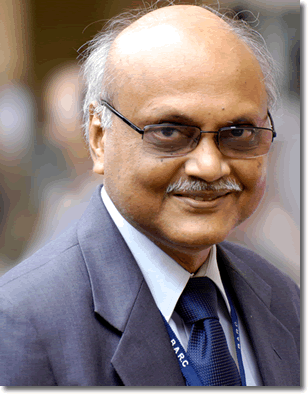
Dr. Ratan Kumar Sinha
Dr S. Banerjee is internationally known for his work in the field of physical metallurgy and materials science. He has contributed to metallurgy of zirconium and titanium based alloys and their applications in the development of nuclear reactor components. His work provided a basis for analysing the radiation stability of structural materials in nuclear reactors. The contributions of Dr Banerjee and his colleagues in the development of shape memory alloys have found their application in heat shrinkable couplings in Indian light combat aircraft project. He was the chancellor of Homi Bhabha National Institute.
Dr Banerjee was conferred with Government of India's civilian award, Padma Shri, in 2005.
Dr Banerjee has been the recipient of Shanti Swarup Bhatnagar Award in Engineering Sciences (1989), G.D. Birla Gold Medal of the Indian Institute of Metals (1997), INSA Prize for Materials Science (2001) and Indian Nuclear Society Award (2003). Notable among the international awards received by him are Acta Metallurgica Outstanding Paper Award (1984) and Humboldt Research Award (2004). Dr Banerjee is a Fellow of Indian National Science Academy, Indian Academy of Sciences, Indian National Academy of Engineering and the National Academy of Sciences.
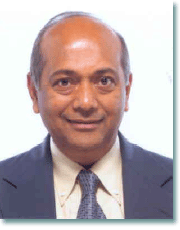
Dr Srikumar Banerjee
Shri Bisweswar Bhattacharjee took over as Director, on April 3, 2001. Earlier, he was Project Director, Rare Materials Project, Mysore, and Director, Chemical Engineering and Technology Group, BARC. He was a key person in the building of the Uranium Corporation of India Limited, Jaduguda, Bihar, which supplies the entire uranium needed for India's nuclear electricity programme. Later, Bhattacharjee switched over to multidisciplinary R & D activities at BARC, Mumbai, for the development of High Speed Rotor (HSR) needed for producing enriched uranium and other strategic materials. The successful commissioning of HSR technology in India has put the country among a select band and enabled production of some materials of "strategic importance". Bhattacharjee played a key role in two other projects: desalination plant coupled to a nuclear electricity station and the Special Materials Project. BARC has already supplied 15 desalination plants to different States. A massive desalination plant, adjacent to the Madras Atomic Power Station at Kalpakkam (NDDP), was also constructed under his guidance.
Shri Bisweswar Bhattacharjee died on 1st September, 2018.
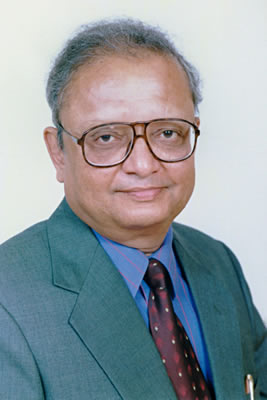
Shri Bisweswar Bhattacharjee
Dr. Anil Kakodkar played a key role in the design and construction of Dhruva. He has contributed immensely in the indigenous development of a large number of critical systems of Indian PHWRs. During his career spanning four and a half decades, he has built a competent team of highly specialized Scientists and Engineers, for the Reactor Programme. He also advocated the development of technologies, for the use of Thorium, taking into account our limited uranium resources. To gain industrial scale experience in the use of Thorium, he conceptualized the Advanced Heavy Water Reactor, which aims to derive two thirds of its power from Thorium. He conceptualized part of the 9th Five Year Plan dealing with R&D sector, and made several important changes in the organization structure of the Centre. The 1998 Pokhran tests were conducted under his tenure. India became a part of the International Thermonuclear Experimental Reactor (ITER) under the Directorship of Dr. Kakodkar. Under the aegis of the Homi Bhabha National Institute (HBNI), Dr. Kakodkar conceptualized a unique PhD programme. He was also instrumental in the creation of the UGC-DAE Consortium, wherein the R&D facilities of DAE are made available to University students.
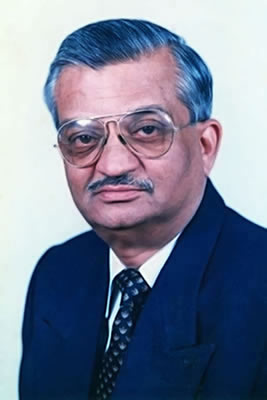
Dr. Anil Kakodkar
He is a distinguished nuclear scientist and an international authority on the issue of Safeguards. He earned his Masters degrees in nuclear power engineering from the Indian Institute of Science, Bangalore, did his advanced nuclear science and technology from Bombay and nuclear chemical engineering from Oak Ridge School of Reactor Technology, USA. He played a key role in the setting up of India's first fuel reprocessing plant at Trombay in 1964 to separate plutonium. With this, India became only the fifth country in the world to develop this technology, the others being USA, the then USSR, the UK and France. During his long tenure in the nuclear establishment he continued to work on high technology areas of relevance to the nuclear fuel cycle, particularly specializing in what is called the 'back end of the fuel cycle'. He was also chairman of the safeguards committee of the Department of Atomic Energy for a number of years. In recognition of his outstanding contributions to the development of nuclear technology in India, he was appointed director of BARC and member, Indian Atomic Energy Commission, in May 1993.
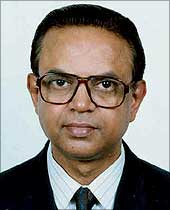
Dr. A. N. Prasad
Dr. Rajagopala Chidambaram started his work on neutron diffraction and crystallography in 1962. He was the first to introduce automation for data collection with neutron diffractometers. He was also instrumental in introducing crystallographic computing in India. He initiated work on the design of nuclear explosives. He was the first one to work out the equation of state of Plutonium. He worked on the implosion method for the device which was tested at Pokhran in 1974. For this purpose, Dr. Chidambaram initiated shockwave research at BARC, in close interaction with DRDO. For the 1998 tests, he introduced a very compact implosion system, which could be weaponized. After the Pokhran test, Dr. Chidambaram initiated “open research” in the area of high pressure physics. For this, a complete range of instrumentation like diamond anvil cells, gas-gun for launching projectiles with complete diagnostic facilities was built indigenously. He also laid the foundation of theoretical high pressure research for calculation of equation of state, phase stability of materials etc. Dr. Chidambaram was also responsible for initiating the development of supercomputers in BARC.
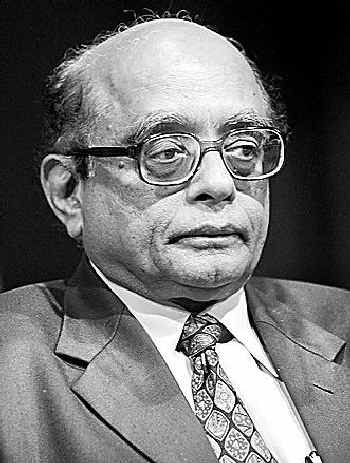
Dr. Rajagopala Chidambaram
Dr. Rajagopala Chidambaram, one of India’s most distinguished scientists and a visionary leader, passed away on January 4, 2025, at the age of 88, in Mumbai
Dr. P.K. Iyengar and Dr. Ramanna pioneered the neutron scattering programme at Trombay. They recognized the importance of Neutron beam research, as a fertile training ground for Scientists, in the broader context of mastering reactor and nuclear technologies. They put India firmly on the World map in studying condensed matter with neutrons. Following the 1964 IAEA meeting, a programme for introducing neutron scattering at nuclear reactors in South-East Asian countries was initiated by IAEA, at the suggestion of Dr. Ramanna and Dr. Iyengar was also involved in the development of the fast reactor assembly, (Purnima-1). Subsequently, Purnima-2 was also built; a critical assembly with a solution of uranyl nitrate as the core. Dr. Iyengar’s training at Italy and USSR on pulsed neutron sources, was instrumental in his leadership role, in the planning of new accelerators at VECC, RRCAT and TIFR. Dr. P.K. Iyengar, passwed away on Wednesday, 21 December, 2011 afternoon following a brief illness.
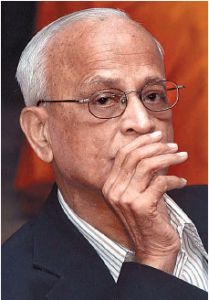
Dr. Padmanabhan Krishnagopalan Iyengar
The first Peaceful Nuclear Explosion (PNE) was carried out in 1974, under the Directorship of Dr. Ramanna and he played a pivotal role in this experiment. He also played a leadership role in other important nuclear programs such as the Dhruva reactor, IGCAR, the Kolkata Cyclotron Centre and the CAT at Indore, which has been renamed as the Raja Ramanna Centre for Advanced Technology in his honour. Dr. Ramanna initiated and led the basic research in nuclear fission, using the neutron beams from the Apsara reactor in 1956. Pioneering research work was done on prompt neutrons and gamma rays, also on occasionally emitted alpha particles in fission, under Dr. Ramanna’s supervision. It was also under his supervision, that the scientific manpower development in DAE was initiated with the setting up of the DAE Training School in 1958. His PhD work (from King’s College, London), involved the development of a new kind of ion chamber, which could measure not only the energy of a nuclear particle, but also its angle, with respect to the direction of the chamber’s electric field. Dr. Raja Ramanna died on 24th September, 2004 at Mumbai.
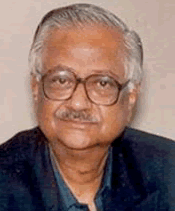
Dr. Raja Ramanna
Dr. Homi N. Sethna: Dr. Homi N. Sethna’s maiden assignment in atomic energy was the setting up of the Rare Earths Plant at Alwaye, Kerala in 1952, for processing of Monazite, to separate rare earths and thorium-uranium concentrate. This was followed by his setting up of the plant at Trombay, in 1955, to produce thorium nitrate and uranium concentrate. The Uranium Metal Plant for producing uranium metal of nuclear purity was commissioned in 1959, under his supervision. The material produced by this plant was later used as fuel for CIRUS reactor. In view of his reputation for completing projects in time, Dr. Sethna was made the Project Manager for the CIRUS reactor, during its construction stage (1956-58). The most iconic achievement of Dr. Sethna’s career was the establishment of Trombay Reprocessing Plant, dedicated to the nation on January 22, 1965. A uranium mill for processing of low-grade uranium ore was also commissioned in 1967, in Jaduguda near Tatanagar, under his leadership. This plant supplied the fuel for both the research reactors and power reactors. The preliminary work on Uranium enrichment studies was also initiated under his direction. Dr. Sethna initiated developmental work on heavy water production processes and other isotopic separations. It was under his directorship, that the construction of Dhruva was initiated in BARC. He was bestowed with several prestigious national awards, including the Padma Vibhushan.
Dr. Sethna passed away on 5th of September, 2010.
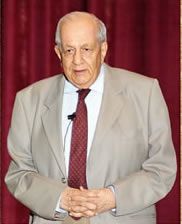
Dr. Homi Nusserwanji Sethna
Dr. Homi Jehangir Bhabha (1909-1966) was the prime architect of India’s atomic energy landscape. Bhabha foresaw a greater role for atomic energy in India and accordingly drew up plans to “build outstanding schools of research” as early as 1940 to address widening gap between India and developed countries in the realm of basic science and research. The Tata Institute of Fundamental Research (TIFR) he created in 1945 is today globally revered for its excellence in basic science research.
The atomic energy establishment (AEET) in Trombay (now BARC) he established in 1954, which he dreamt of becoming the “industrial Versailles” of India, continues to be focal point for the progress of atomic energy and scientific developments. Within a short span of two decades, under Dr. Bhabha’s leadership, India transformed to become a meaningful player in science and technology. The unique culture and camaraderie he infused in the early years within the Department of Atomic Energy (DAE) continues to thrive in the hearts and minds of its workforce.
Dr. Bhabha strongly believed “...it is the duty of people like us to stay in our country and build outstanding schools of research such as some other countries are fortunate enough to possess”.

Dr. Homi Jehangir Bhabha